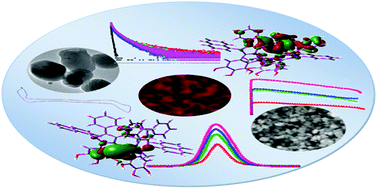A hybrid inorganic–organic light-emitting diode using Ti-doped ZrO2 as an electron-injection layer†
Abstract
We have fabricated stable efficient iridium(III)-bis-5-(1-(naphthalene-1-yl)-1H-phenanthro[9,10-d]imidazole-2-yl) benzene-1,2,3-triol (acetylacetonate) [Ir(NPIBT)2 (acac)] doped inverted bottom-emissive green organic light-emitting diodes using Ti-doped ZrO2 nanomaterials as the electron injection layer. The current density (J) and luminance (L) of the fabricated devices with Ti-doped ZrO2 deposited between an indium tin oxide cathode and an Ir(NPIBT)2 (acac) emissive layer increased significantly at a low driving voltage (V) compared with control devices without Ti-doped ZrO2. The Ti-doped ZrO2 layer can facilitate the electron injection effectively and enhances the current efficiency (ηc) of 2.84 cd A−1 and power efficiency (ηp) of 1.32 lm W−1



 Please wait while we load your content...
Please wait while we load your content...